DL-ETHIONINE
Synonym(s):DL -2-Amino-4-(ethylthio)butyric acid
- CAS NO.:67-21-0
- Empirical Formula: C6H13NO2S
- Molecular Weight: 163.24
- MDL number: MFCD00063102
- EINECS: 200-647-0
- SAFETY DATA SHEET (SDS)
- Update Date: 2023-04-23 13:52:06
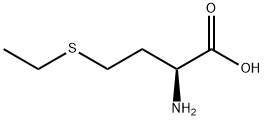
What is DL-ETHIONINE?
Chemical properties
Off-White Solid
The Uses of DL-ETHIONINE
DL-Ethionine is used as a dietary supplement to accelerate cholangiocarcinogenesis in vivo. It is also used to induce oxidative stress in liver to study the levels and activities of anti-oxidative enzymes and compounds such as glutathione.
The Uses of DL-ETHIONINE
antineoplastic; inhibitor DNA methylation
What are the applications of Application
D,L-Ethionine is a racemic mixture of the anti-methylation agent L-Ethionine and its enantiomer D-Ethionine
Definition
ChEBI: A non-proteinogenic alpha-amino acid that is methionine in which the S-methyl group is replaced by an S-ethyl group.
General Description
White crystalline flakes.
Air & Water Reactions
Slightly soluble in water.
Reactivity Profile
A synthetic thio-substituted amino acid.
Health Hazard
ACUTE/CHRONIC HAZARDS: When heated to decomposition DL-ETHIONINE emits toxic fumes of NOx and SOx.
Fire Hazard
Flash point data for DL-ETHIONINE are not available; however, DL-ETHIONINE is probably combustible.
Biochem/physiol Actions
DL-Ethionine is a racemic mixture of the anti-methylation agent L-Ethionine and its enantiomer D-Ethionine. DL-Ethionine is used as a dietary supplement to accelerate cholangiocarcinogenesis in vivo. DL-Ethionine is used to induce oxidative stress in liver to study the levels and activities of anti-oxidative enzymes and compounds such as glutathione.
Safety Profile
Mddly toxic by ingestion and intraperitoneal routes. Suspected carcinogen with experimental carcinogenic and tumorigenic data. An experimental teratogen. Experimental reproductive effects. Mutation data reported. When heated to decomposition it emits toxic fumes of SOx and NOx.
Properties of DL-ETHIONINE
| Melting point: | 265-268 °C |
| Boiling point: | 310℃ |
| alpha | [α]D20 0±0.5° (c=5, dil. HCl) |
| Density | 1.164 |
| refractive index | 1.5500 (estimate) |
| Flash point: | 142℃ |
| storage temp. | -20°C |
| solubility | Methanol (Slightly, Heated), Water (Slightly) |
| pka | 2.23±0.10(Predicted) |
| form | Crystalline Powder or Flakes |
| color | White to off-white |
| Water Solubility | Soluble in water. |
| Merck | 14,3738 |
| BRN | 1722529 |
| CAS DataBase Reference | 67-21-0(CAS DataBase Reference) |
| EPA Substance Registry System | S-Ethylhomocysteine (67-21-0) |
Safety information for DL-ETHIONINE
| Signal word | Warning |
| Pictogram(s) |
 Exclamation Mark Irritant GHS07 |
| GHS Hazard Statements |
H315:Skin corrosion/irritation H319:Serious eye damage/eye irritation H335:Specific target organ toxicity, single exposure;Respiratory tract irritation |
| Precautionary Statement Codes |
P261:Avoid breathing dust/fume/gas/mist/vapours/spray. P264:Wash hands thoroughly after handling. P264:Wash skin thouroughly after handling. P271:Use only outdoors or in a well-ventilated area. P280:Wear protective gloves/protective clothing/eye protection/face protection. P302+P352:IF ON SKIN: wash with plenty of soap and water. P305+P351+P338:IF IN EYES: Rinse cautiously with water for several minutes. Remove contact lenses, if present and easy to do. Continuerinsing. |
Computed Descriptors for DL-ETHIONINE
New Products
4-Aminotetrahydropyran-4-carbonitrile Hydrochloride (R)-3-Aminobutanenitrile Hydrochloride 4-AMINO-TETRAHYDRO-PYRAN-4-CARBOXYLIC ACID HCL 4-(Dimethylamino)tetrahydro-2H-pyran-4-carbonitrile 3-((Dimethylamino)methyl)-5-methylhexan-2-one oxalate 1,4-Dioxa-8-azaspiro[4.5]decane 5-Bromo-2-nitropyridine Nimesulide BP Aceclofenac IP/BP/EP Mefenamic Acid IP/BP/EP/USP Diclofenac Sodium IP/BP/EP/USP Ornidazole IP Diclofenac Potassium SODIUM AAS SOLUTION ZINC AAS SOLUTION BUFFER SOLUTION PH 10.0(BORATE) GOOCH CRUCIBLE SINTERED AQUANIL 5 BERYLLIUM AAS SOLUTION 2-Bromo-1-(bromomethyl)-3-chloro-5-nitrobenzene 2-Bromo-3-nitroaniline N-(3-Hydroxypropyl)-N-methylacetamide 3-Bromo-6-chloropyridazine 4-ethyl-3-nitrobenzoic acidRelated products of tetrahydrofuran
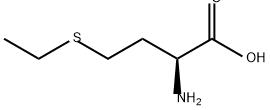

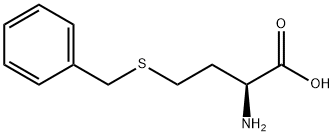


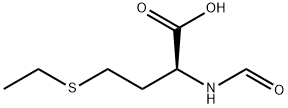

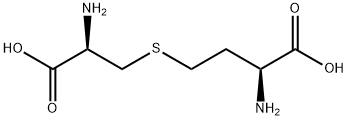
You may like
-
 DL-Ethionine CAS 67-21-0View Details
DL-Ethionine CAS 67-21-0View Details
67-21-0 -
 Dl-ethionine 95% CAS 67-21-0View Details
Dl-ethionine 95% CAS 67-21-0View Details
67-21-0 -
 DL-Ethionine CAS 67-21-0View Details
DL-Ethionine CAS 67-21-0View Details
67-21-0 -
 1823368-42-8 98%View Details
1823368-42-8 98%View Details
1823368-42-8 -
 2-(3-(tert-butyl)phenoxy)-2-methylpropanoic acid 1307449-08-6 98%View Details
2-(3-(tert-butyl)phenoxy)-2-methylpropanoic acid 1307449-08-6 98%View Details
1307449-08-6 -
 Ethyl 3-(furan-2-yl)-3-hydroxypropanoate 25408-95-1 98%View Details
Ethyl 3-(furan-2-yl)-3-hydroxypropanoate 25408-95-1 98%View Details
25408-95-1 -
 2-Chloro-5-fluoro-1-methoxy-3-methylbenzene 98%View Details
2-Chloro-5-fluoro-1-methoxy-3-methylbenzene 98%View Details
1805639-70-6 -
 Lithium ClavulanateView Details
Lithium ClavulanateView Details
61177-44-4